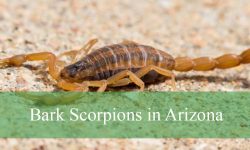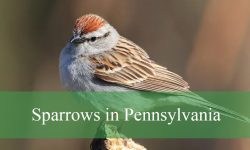The second-largest state in the union, Texas, is home to a wide range of spider species as well as a diversified array of fauna. Although jumping spiders and tarantulas are ubiquitous, black and white spiders are not as frequent as people think. This article will teach you how to recognize 19 different species of black and white spiders found in Texas.
Different types of Black and White Spiders in Texas
1. Crab spiders (Thomisidae)
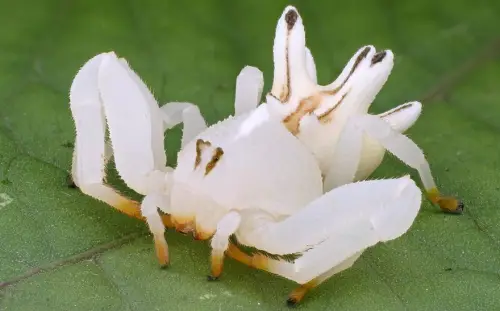
Crab spiders (Thomisidae), display unique characteristics. Females typically measure 7-11 mm, while males are smaller, ranging from 2-4 mm. Their colors vary, often appearing in shades of pink, yellow, white, green, or brown.
In Texas, these spiders often linger by flowers, hunting without webs. Their long forelegs help in ambushing prey. They consume pollen and nectar during scarcity.
Some species develop a beneficial bond with plants, deterring pests and attracting the spiders for protection.
2. Tigrosa Grandis
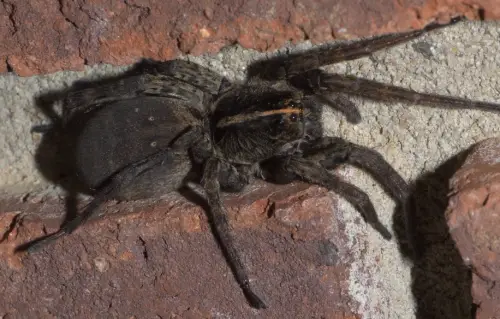
In the Lycosidae family, Tigrosa Grandis is the only species that lives only in the United States, from Montana to Texas. It is found in five states, including Texas, according to research. August is the best month to see Tigrosa Grandis in the wild.
3. Black Widow
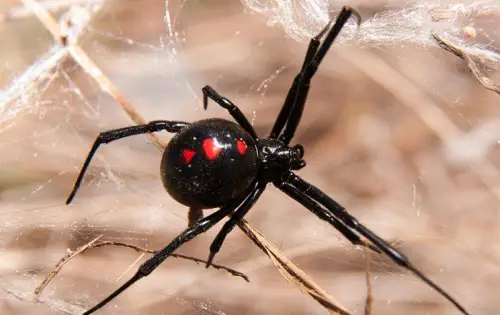
In Texas, female black widows, recognized for their venom, grow up to an inch, while males reach a quarter inch. Their black bodies with red hourglass markings and post-mating cannibalism add to their ominous reputation. While their bites may not immediately hurt, their venom induces nausea, cramps, and breathing difficulties, especially in the vulnerable young and elderly. They favor outdoor habitats with abundant prey.
4. Burrowing Wolf Spider
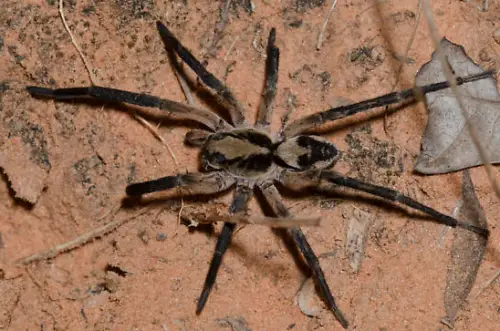
Burrowing Wolf Spiders survive underground, creating vertical tunnels for life. Males depart their burrows to seek mates post maturity. Various species, like Geolycosa, construct deep, vertical tunnels up to 15-30 body lengths. Sporting black, gray, and brown patterns, these sizable, agile spiders form essential burrow networks.
5. Bold Jumping Spider
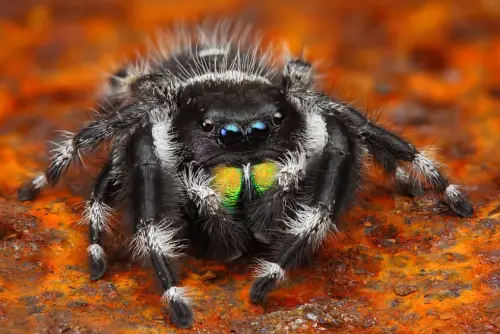
Phidippus audax, or the Bold Jumping Spider, also called the Daring Jumping Spider, boasts a distinct pattern on its black abdomen and legs. Known for its front-facing eyes and green metallic mouthparts, it rarely bites, causing mild effects like redness, swelling, and itching. These spiders inhabit gardens, fences, and external walls, thriving in Texas’ broad fields and grasslands. They prefer flat, vertical surfaces for hunting.
6. Twin-Flagged Jumping Spider
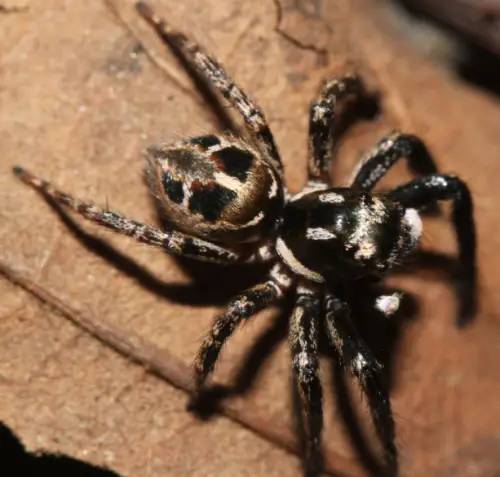
Known as the twin-flagged jumping spider, Anasaitis Canosa is recognized by its distinctive twin pennant-like patterns on the cephalothorax’s dorsal side. With an appearance resembling fifty pairs of legs, it features two to four white marks atop its black head. Often found on leaves, fences, and exterior walls, this tiny, fast-moving spider sports a white dash on its abdomen, encircled by a larger white ring and faint chevrons. Harmless, it swiftly jumps to evade threats.
7. Banded Garden Spider
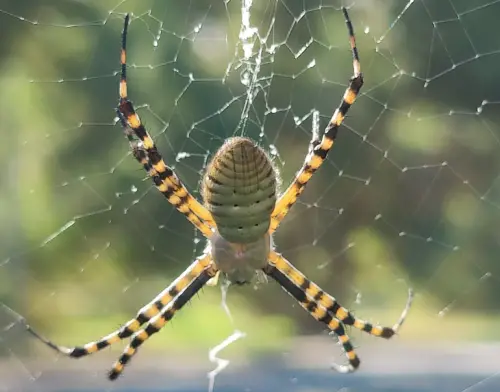
Known as the Banded Orb Weaving Spider, it exhibits an oval abdomen with vivid markings, including a pale yellow back adorned with black stripes. Adult females typically measure 13-14.5 mm, while their male counterparts are notably smaller.
Their colossal webs, spanning around 23.6 in (60 cm), are adhesive and durable, capturing large insects like wasps and grasshoppers. These webs feature a zigzag silk pattern, the “stabilimentum,” likely attracting prey. In Texas, their bites, similar to a bee sting, are uncommon, primarily in self-defense.
8. Long-Palped Ant Mimic Sac Spider

The Long-Palped Ant Mimic Sac Spider, despite its name, doesn’t resemble an ant. Mimicking ants’ movements, it appears six-legged with antennae. Juveniles sport entirely transparent brown legs, while adult front legs feature black at the start and brown toward the body. Present in the Pacific Northwest and Eastern United States, their bites, similar to a bee sting, are infrequent due to their small size and often fail to pierce the skin.
9. Giant Lichen Orb Weaver Spider
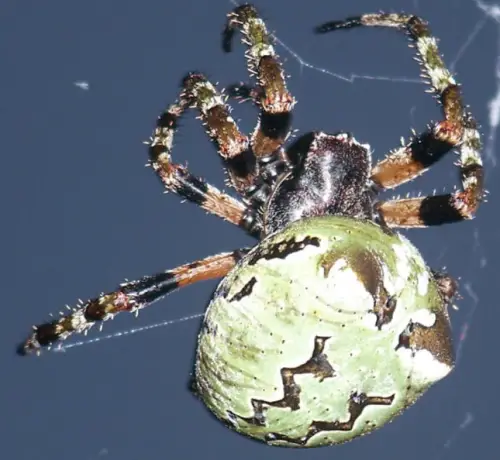
The Giant Lichen Orb Weaver Spider (Araneus Bicentenarius) showcases orange legs with black rings and grayish-green bodies adorned with white marks, occasionally appearing yellow or grayish-green. In Texas woods, they reside on lichen-covered trees, spinning massive 8-foot (2.4 m) webs. These nocturnal creatures stay concealed during the day, avoiding birds and predators.
10. Red Stripe Spider
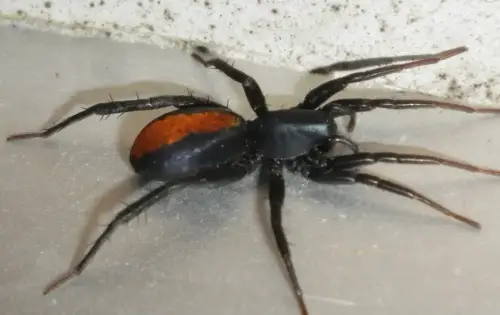
True spider is a member of the Corinnidae family, Castianeira crocata is sometimes referred to as the red stripe spider. Because of its characteristic black body and red markings on the back, it may be mistaken for a black widow spider even though it has a completely different body type. The geographic range of Castianeira crocata is said to include three states in the United States, including Texas.
11. Spined Micrathena
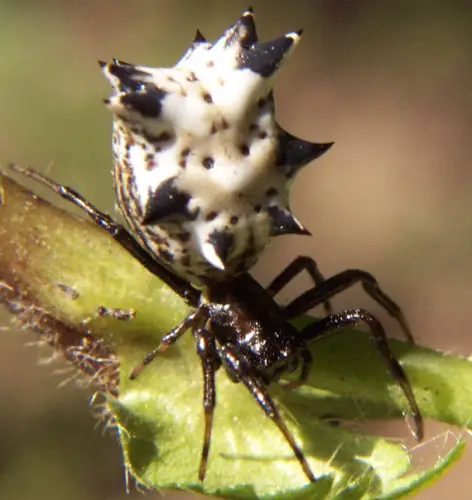
Referred to as the Spiny-Bellied Orbweaver or Castleback Orbweaver, the Spined Micrathena showcases females at 8-10 mm, males at 4.5 mm, with white or yellowish bodies, dark mottles, and prominent black abdominal spines. In Texas, they inhabit hardwood forests near water, active during late summer and early fall. Their strong webs, up to 200 mm across, capture mosquitoes and small flying insects. Despite their wandering behavior, their venom is harmless to humans.
12. Eastern Parson Spider
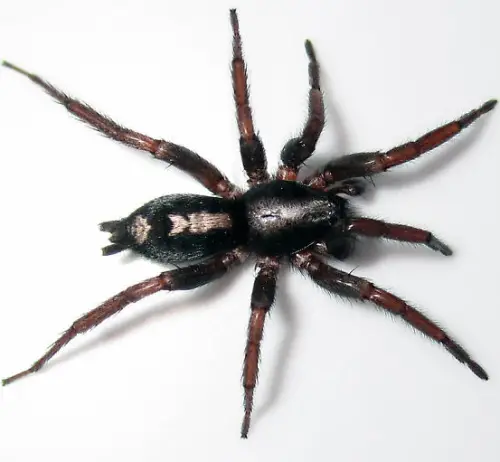
The Eastern Parson Spider, primarily black, features a white-striped abdomen resembling an 18th-century necktie. Its distinctive ruffled marking and hairy body vary from light to dark brown. This nocturnal hunter scampers along walls and the ground, hiding under debris by day. Its bites, typically at night or when concealed, rarely lead to severe allergic reactions.
13. Arrowhead Orbweaver
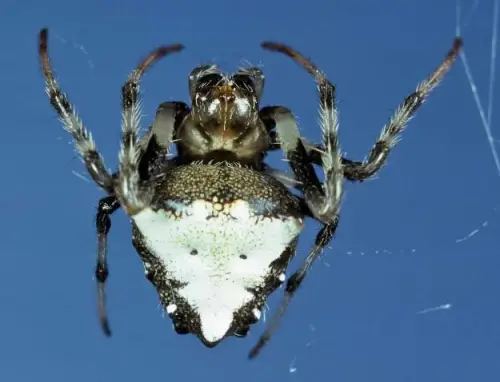
Known as the Arrowhead Spider, Triangle Orb Weaver, and Triangulate Orb Weaver, it features females with 7-14 mm yellow or white triangle abdomens. Males, measuring 4-6 mm, display shades from dark brown to rusty red. Their arrowhead-like abdomens distinguish them. In Texas, they reside in parks, gardens, and forests, active during late summer and early fall. Reflective white abdomens aid heat adaptation, while yellow and white markings attract prey.
14. Trapdoor Spider
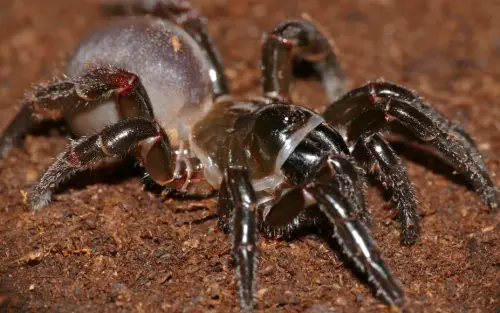
Trapdoor spiders can grow to be rather enormous even if they are not the biggest in Texas. They are 2.5 inches wide and can reach lengths of 1 to 14 inches. Their bodies are sleek, with colors varying from dark brown to black. When frightened, these spiders hide inside their tunnels. Bite symptoms are more than just minor discomfort; they are rare. Although Unmidia is a global genus, North America is home to the majority of the species, which is commonly referred to as trapdoor spiders.
15. Mabel Orchard Orbweaver
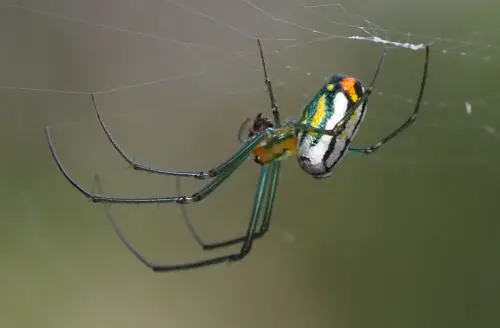
Known as Leucauge argyrobapta, the Mabel Orchard Orbweaver exhibits females at 5.5-7.5 mm and males at 3.5-4.0 mm, with silvery-white abdomens, tan heads, backs, and greenish-black legs. Their abdomen often displays bright green, yellow, and orange patches. Commonly found in orchards, shrubby meadows, suburban areas, hedges, and houses, these sociable spiders link their webs during abundant prey times. Mild and reserved, their bites, akin to a bee sting, are rarely harmful to humans.
16. Gray Wall Jumping Spider
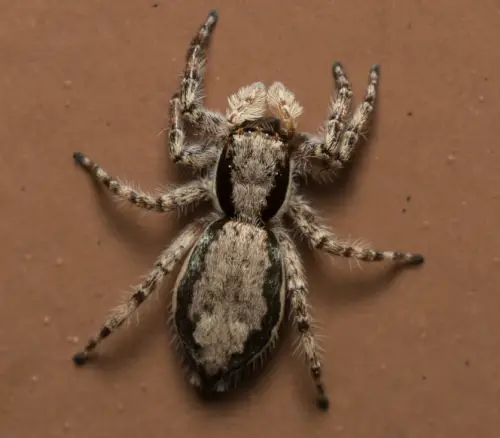
Known as Menemerus bivittatus, the Gray Wall Jumping Spider flaunts a flattened torso with grayish-white hair and dark tufts near the eyes. Males display brownish-white stripes on the abdomen and a black dorsal stripe, while females, with larger abdomens, feature broad black-striped rims. Originating from Africa, they’ve spread worldwide, favoring building exteriors and tree trunks. These spiders capture prey through agile leaps, leveraging their acute vision. Male courtship involves generating low clicks using leg hairs and chelicerae teeth.
17. Red-Spotted Ant Mimic Spider
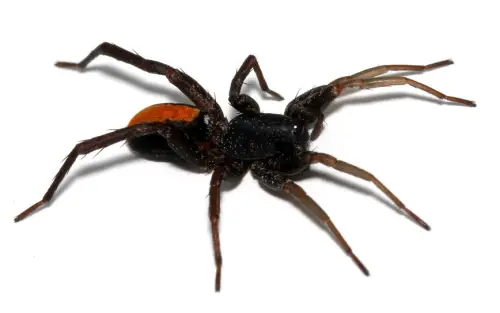
The red-spotted ant mimic spider imitates ants by walking on six legs, using the front pair as antennae. Sporting black bodies, they feature a striking red mark on the abdomen and a central white line on the carapace. This clever disguise allows them to approach and prey on other insects without raising alarm among the ant community.
18. Western Spotted Orbweaver
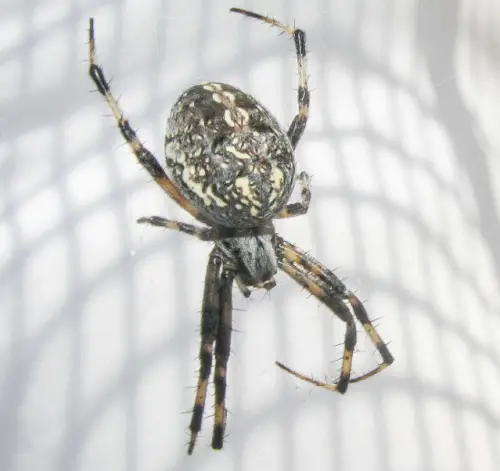
The Western Spotted Orbweaver, or Zigzag Spider, Western Garden Orbweaver, features females measuring 9-18 mm and males 6-13 mm, displaying black and white wavy markings on bulbous abdomens and hairy legs with dark bands. In Texas, they thrive in various habitats, particularly tree-rich environments like orchards, wooded fields, and backyards. Active in summer and fall, they primarily hunt at night. Often, they hide at the edge of their webs under leaves, patiently awaiting beetles, flies, and other prey. These spiders safeguard their eggs in curled leaves, with spiderlings living up to a year. Harmless to humans, like other orb weavers.
19. False Black Widow
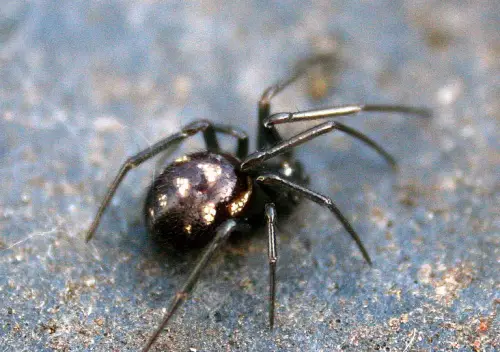
Resembling Black Widows but lacking the iconic hourglass marking, False Widows populate human habitats. While their bites can be painful, they pose less risk than black widows. False black widows only bite when threatened, with symptoms including fever, perspiration, and muscle spasms, often not requiring immediate treatment. Found on fences, walls, and tree bark, they rely on web vibrations to detect prey and potential threats.
People Who Read This Also Read:

